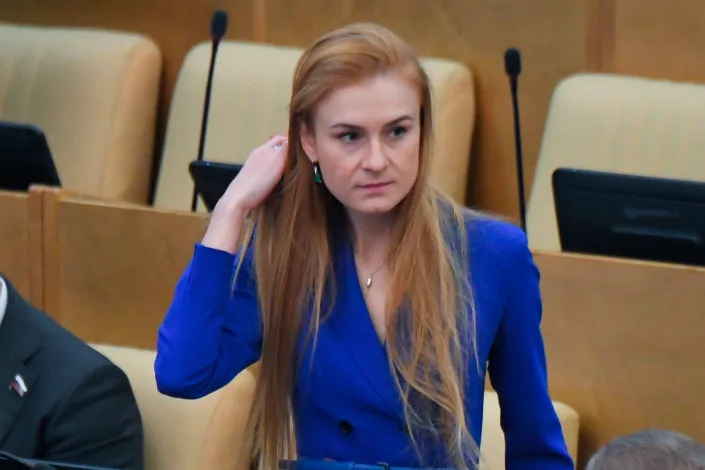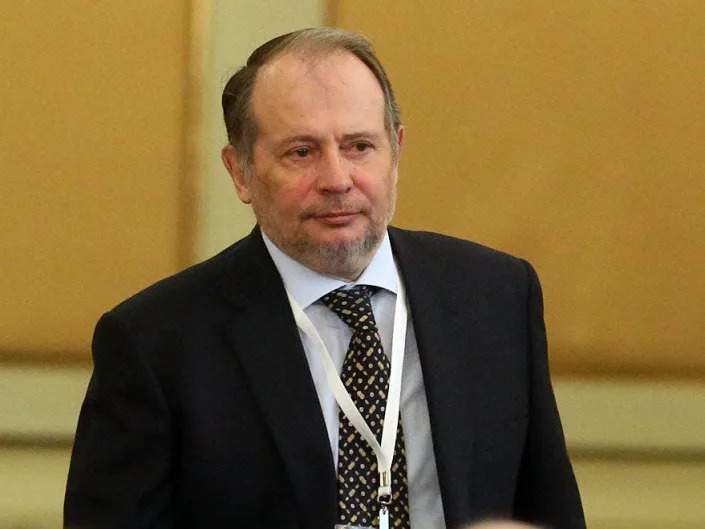Waiyee Yip
Mon, March 7, 2022

Rhee said on Instagram that he is in Ukraine to fight.Screenshot from Instagram
The South Korean YouTuber Ken Rhee says he is in Ukraine to fight, despite Korea's travel ban there.
Koreans who enter Ukraine without authorization may be subject to a jail sentence or a fine.
"If I return alive, then I will take responsibility for everything," Rhee said on Instagram.
Ken Rhee, a popular South Korean YouTuber and former Korean navy seal said he has landed in Ukraine to fight as a volunteer soldier — despite his government's travel ban to the country.
On Instagram, the 37-year-old said in a post early Monday morning that he and his travel mates had initially considered departing for the country "through official procedures."
"But we felt strong opposition from the Korean government, and there was some friction," noting that he was "threatened" with "being treated as a criminal" if he ignored Korea's travel ban to Ukraine.
"But punishment cannot stand still in this situation without helping Ukraine with the skills, knowledge, and expertise we have," he continued in the post, which was shared alongside a picture of the backs of three men.
"If I return alive, then I will take responsibility for everything and receive the punishment I'm given."
It is unclear who Rhee has left the country with. He did not immediately respond to Insider's request for comment.
Korea's Foreign Ministry said in a statement on Monday that it was aware that "Koreans including Ken Rhee" have departed the country to join the Ukrainian volunteer army.
"To protect the lives and safety of citizens, as of Feb. 13, the government has issued a Level 4 travel warning throughout Ukraine and has banned Korean citizens from traveling to Ukraine," it said.
It added that anyone who enters Ukraine without authorization may be subject to a year in prison or a fine of up to 10 million won (about $8,150). They would also be required to return their Korean passports and could face challenges applying for a replacement, it said.
But Rhee did not seem too concerned by the prospect.
In another Instagram post addressed to the Foreign Ministry, he wrote: "My team has arrived safely in Ukraine. Rather than waste time seeking to invalidate our passports, think about how you can support."
Later, Rhee shared several more posts on the platform, including a picture of a military tent and one of himself in protective gear sitting next to a dog.
"During the Korean War, the world helped Korea," he said. "Now, we will help Ukraine. We cannot just stand by and watch innocent people get hurt and die."
To date, Rhee's YouTube channel has amassed more than 774,000 subscribers, and his videos have gained more than 100 million views.
Rhee shot to fame in 2020 after appearing in the YouTube series "Fake Men," where he trained celebrity contestants to complete a brutal regimen designed for the navy's elite forces, according to The Korea Herald. As a former Korean navy seal himself, he has also shared his expertise as a guest on variety shows in South Korea, the outlet said.
In 2020, he was embroiled in controversy when it came to light that he was convicted of sexual assault in 2019. Rhee said he was wrongfully convicted, according to The Korea Herald.
U.S. citizens travel to Ukraine to help in war efforts
The number of international fighters helping Ukraine is growing every day. The Ukrainian government reports more than 16,000 foreigners have already arrived, including some Americans.
Andriy Penchak is an American licensed truck driver who was born in Ukraine. He landed with three other Americans ready to go into the war zone. He told "CBS Mornings" co-anchor Tony Dokoupil that he wanted to save the lives of the Ukrainians still inside the country.
He launched this mission from Bucks County, Pennsylvania. He's never been to battle and used personal savings to pay for his plane tickets.
Penchak said the hardest part was leaving his three young children. "I didn't say goodbye. I said, see you later," he said.
While the White House says the American military is not going into Ukraine to fight Russia, everyday Americans like Penchak are not restricted from going in — although it's not recommended.
"We encourage all Americans not to travel to Ukraine right now, and those Americans who are in Ukraine to leave Ukraine, because it is not safe," said Kristina Kvien, the acting U.S. ambassador to Ukraine.
Bipartisan leaders of the House Foreign Affairs Committee Congressman Gregory Meeks and Congressman Michael McCaul traveled to Ukraine's border to view the war's human toll up close.
Meeks said that the Americans traveling to Ukraine is an example of the importance of democracy.
"I think that what they see and what people around the world are seeing is democracy is at stake and as President Zelensky said to us, this is not just a fight for the Ukrainian people, this is a fight for all of us. It's just starting here," said Meeks.
"Ukrainians have inspired the world, and these freedom fighters, I call them," McCaul said.
Before the war, Kristofer Kalas was a pastry chef who split his time between Ukraine and New York.
Now, he's dressed in full body armor walking toward the checkpoint into Ukraine. He made sure his wife and baby made it safely to Poland but decided to go back - not to fight, he says, but to help others and help ensure Ukraine remains for years to come.
"I want my child to have a Ukraine to go back to when she's grown up," Kalas said.
Russia's military warned foreign fighters they'd be treated as "mercenaries," not as protected combatants under "international humanitarian law." Kalas said .
"As far as I can tell, they don't protect civilians under humanitarian law, so I don't put much credence in anything they say," Kalas said.
How AWOL British soldier could draw
U.K. into conflict with Russia
Barely two weeks into the brutal war in Ukraine, one question has arisen: Which countries are involved in the fighting?
On paper, there are only two armies lobbing artillery shells and ammunition at each other: Russia and Ukraine.
But the confusion about what constitutes a country joining the fight deepened this week, after the U.K. military reported that a 19-year-old serviceman had gone AWOL from his post in the Coldstream Guards—an elite unit that services Queen Elizabeth at Windsor Castle—and was apparently headed to fight in Ukraine.
British tabloid newspaper The Sun reported that the soldier, whose name is being withheld, was one of four active military servicemen who had absconded to go fight in Ukraine. According to the paper, he wrote to his parents before he left, telling them that he was buying a one-way ticket to Poland, the main entry point into Ukraine, whose airports have been shut since Russia invaded the country on Feb. 24.
Ukraine’s besieged government formed an international legion on Feb. 27, appealing for volunteers to bolster their military strength against the far bigger Russian forces. “Together we defeated Hitler, and we will defeat Putin too,” tweeted Foreign Minister Dmytro Kuleba, in announcing the foreign-fighters unit.
The foreign minister said on the weekend that about 20,000 volunteers from 52 countries have signed up, and Ukraine’s embassies report they have seen a steady stream of people seeking documentation allowing them to travel to the war front to join the fight.
From parliament to the war front
Facebook groups have sprung up to guide prospective fighters through the process of signing up; one Facebook group, the French Volunteers in Ukraine group, now has 10,700 members. And on Wednesday, Latvia announced that its Member of Parliament Juris Jurašs had left to fight in Ukraine; the Baltic nation shares a 133-mile border with Russia.
Until now, Western countries have stopped short of joining Ukraine’s military fight, focusing their efforts on imposing economic sanctions, and believing that engaging military would transform the conflict into a far broader war in Europe—something that has not occurred in 80 years—from which it could take years to extricate.
The fact that active U.K. servicemen might be among them has sparked deep anxiety in the government. It has banned active-duty military from joining Ukraine’s volunteers.
A friend of the missing Queen’s guardsman told The Sun that the serviceman had grown tired of ceremonial duties at Windsor Castle, where the guards march in formation outside the castle, dressed in ornate uniforms topped with their famous bearskin hats. “You don’t join the army to stand in bearskin hats and march about,” the guardsman told the paper. “You join it to fight and see action.”
The U.K. Ministry of Defense repeated its warning against servicemen joining the fight in Ukraine, saying they would face “disciplinary and administrative consequences.”





